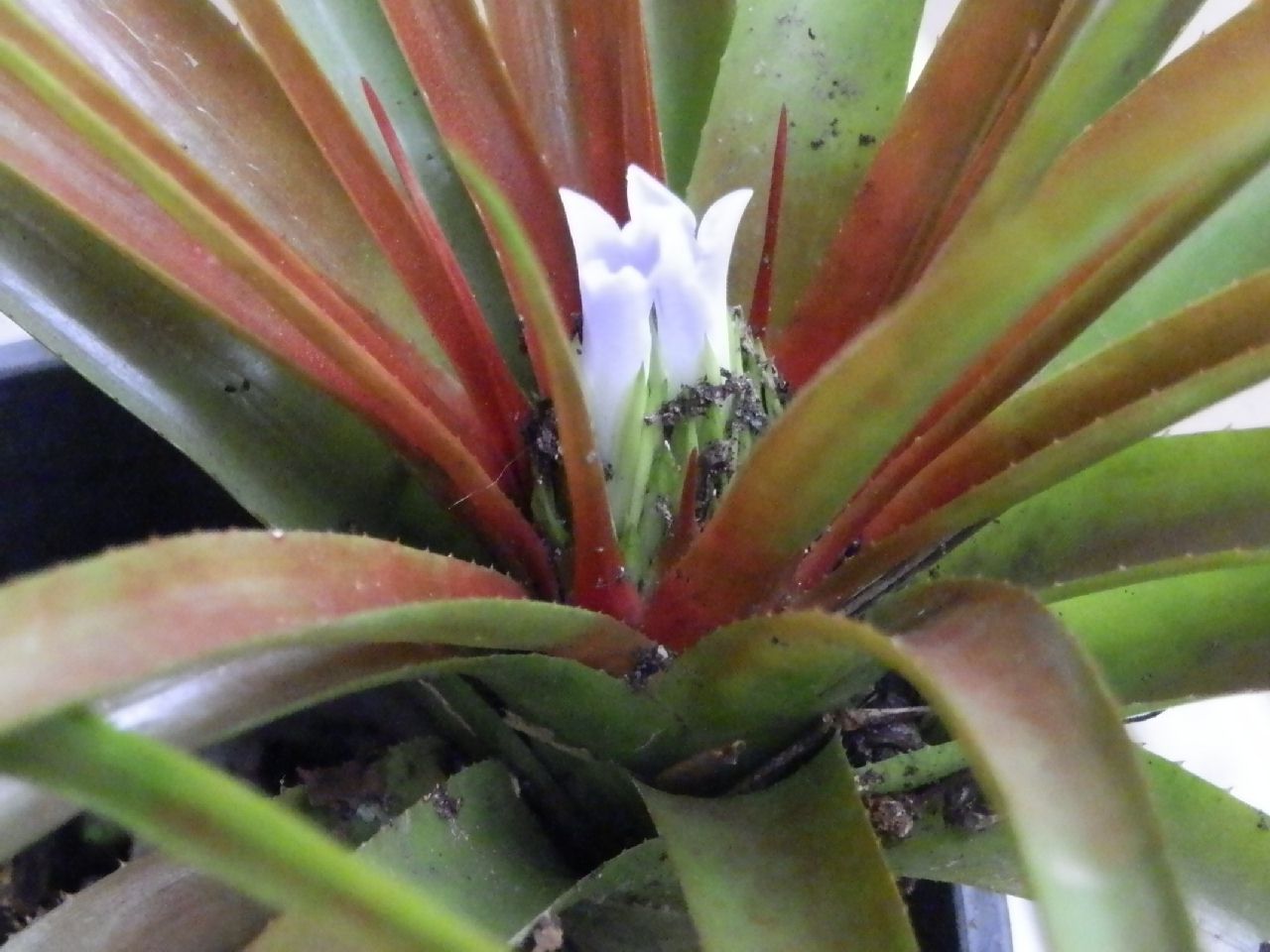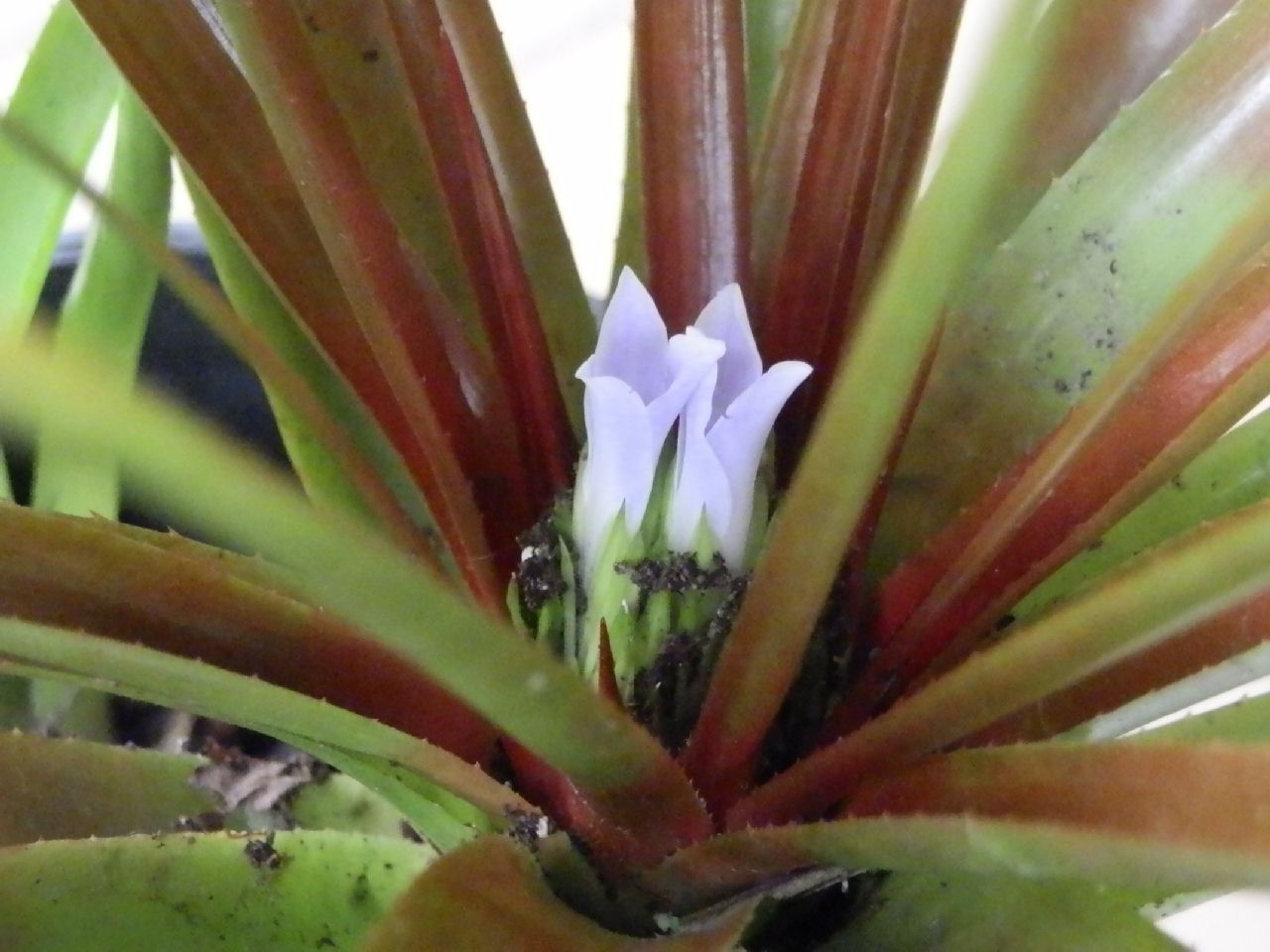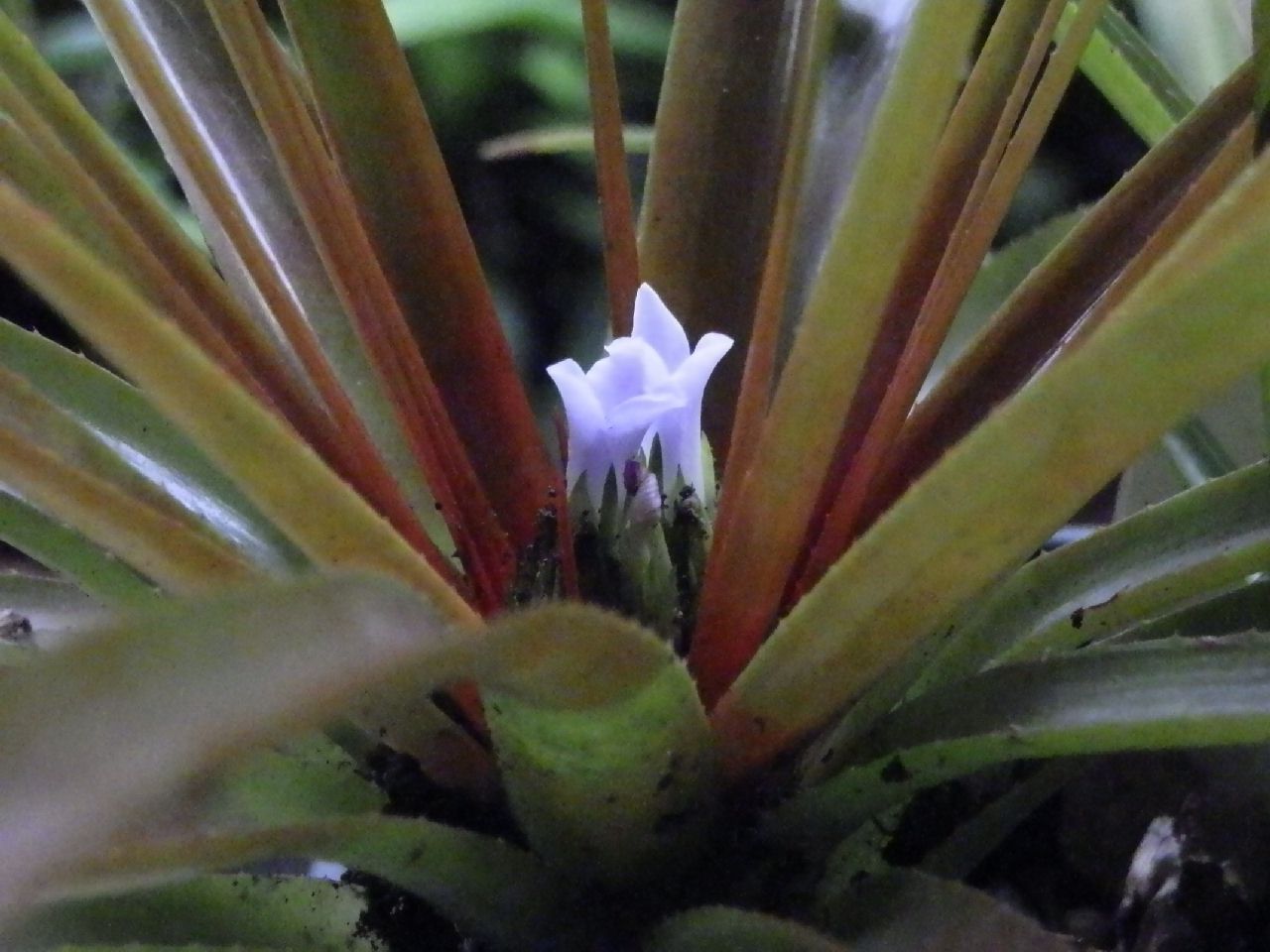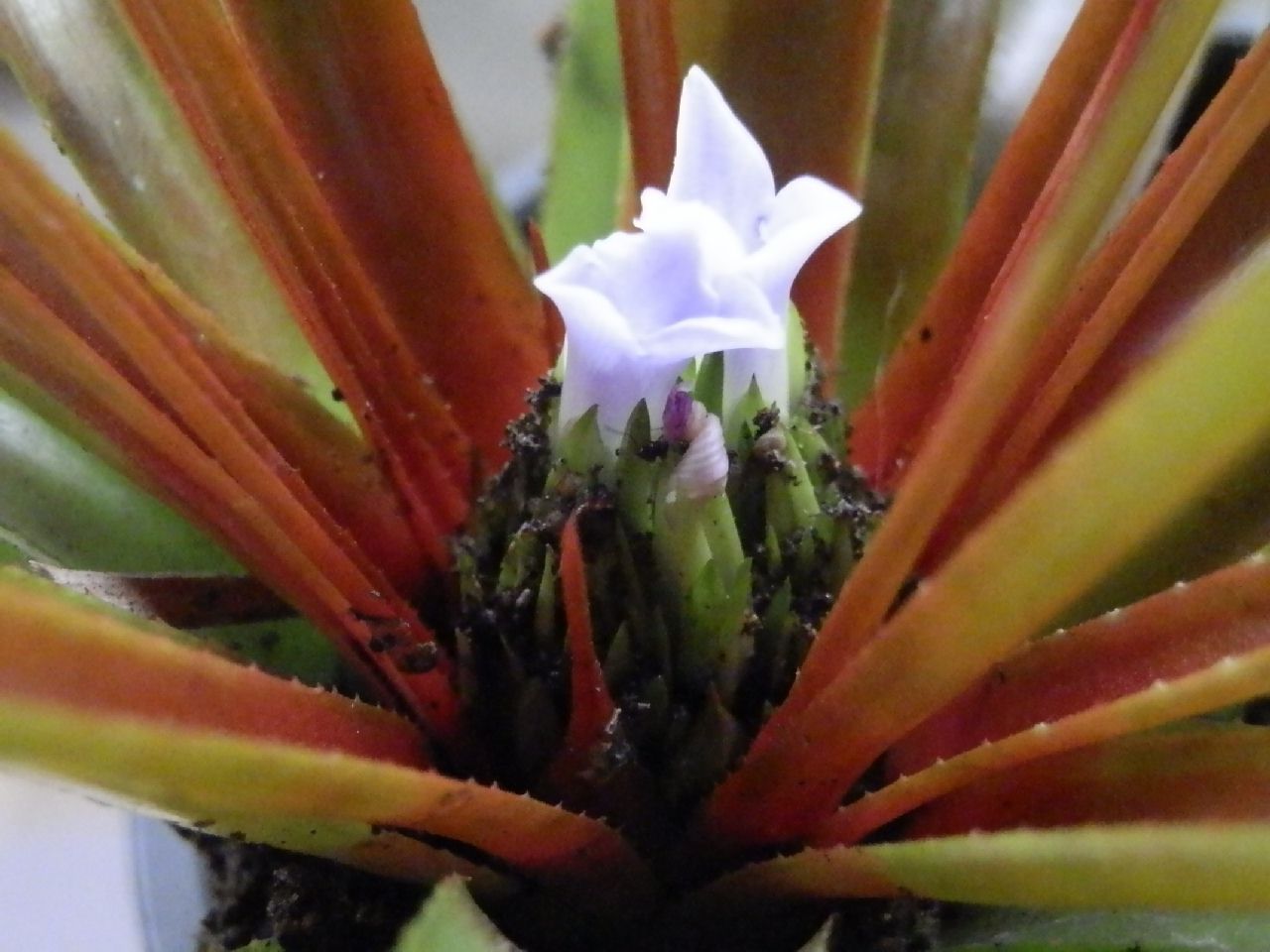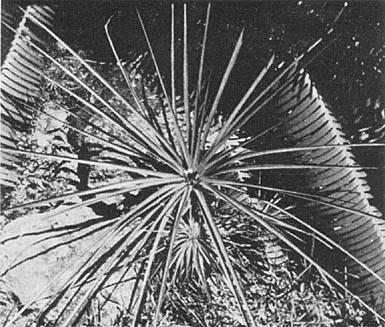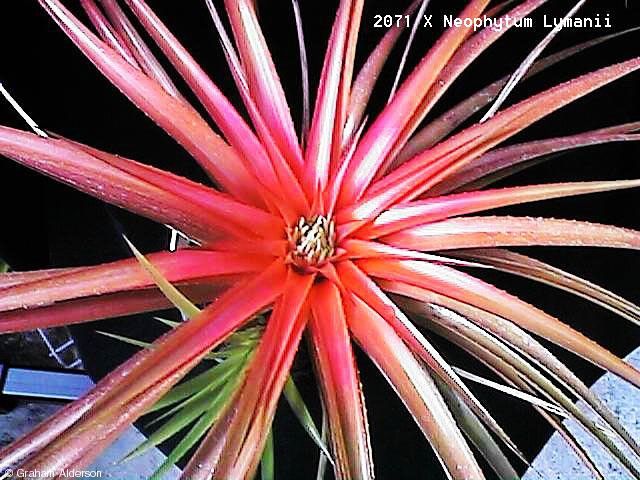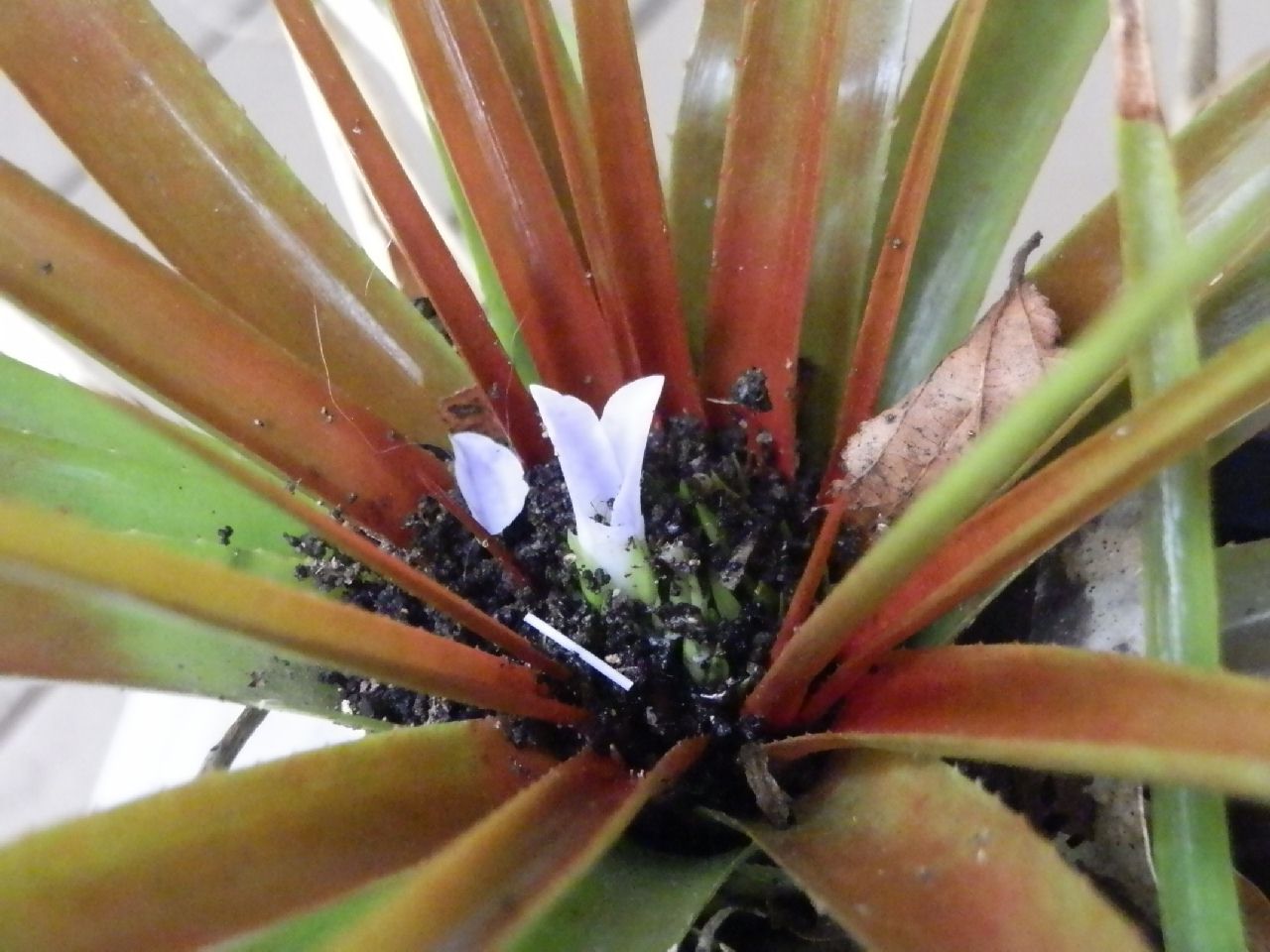
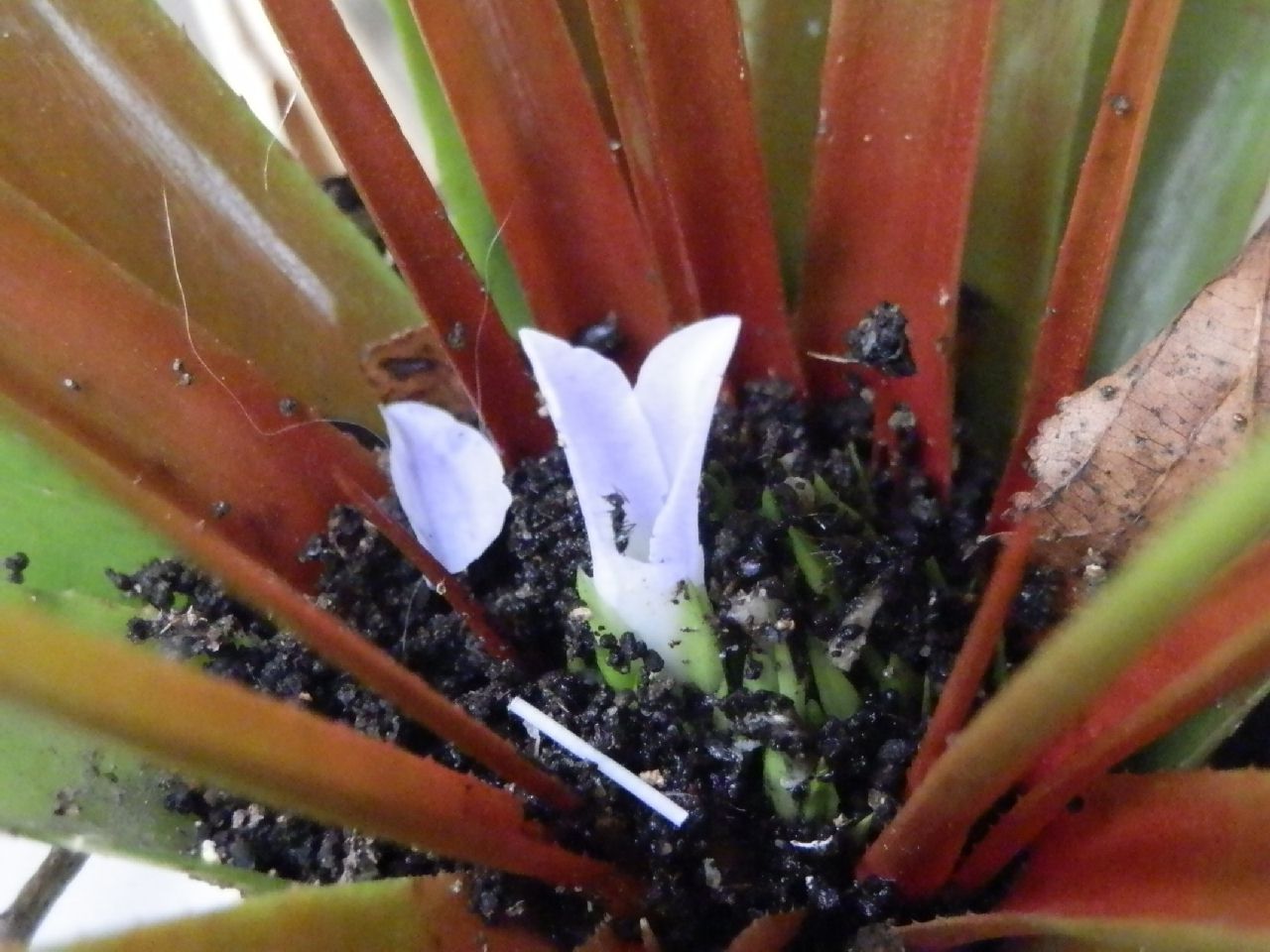
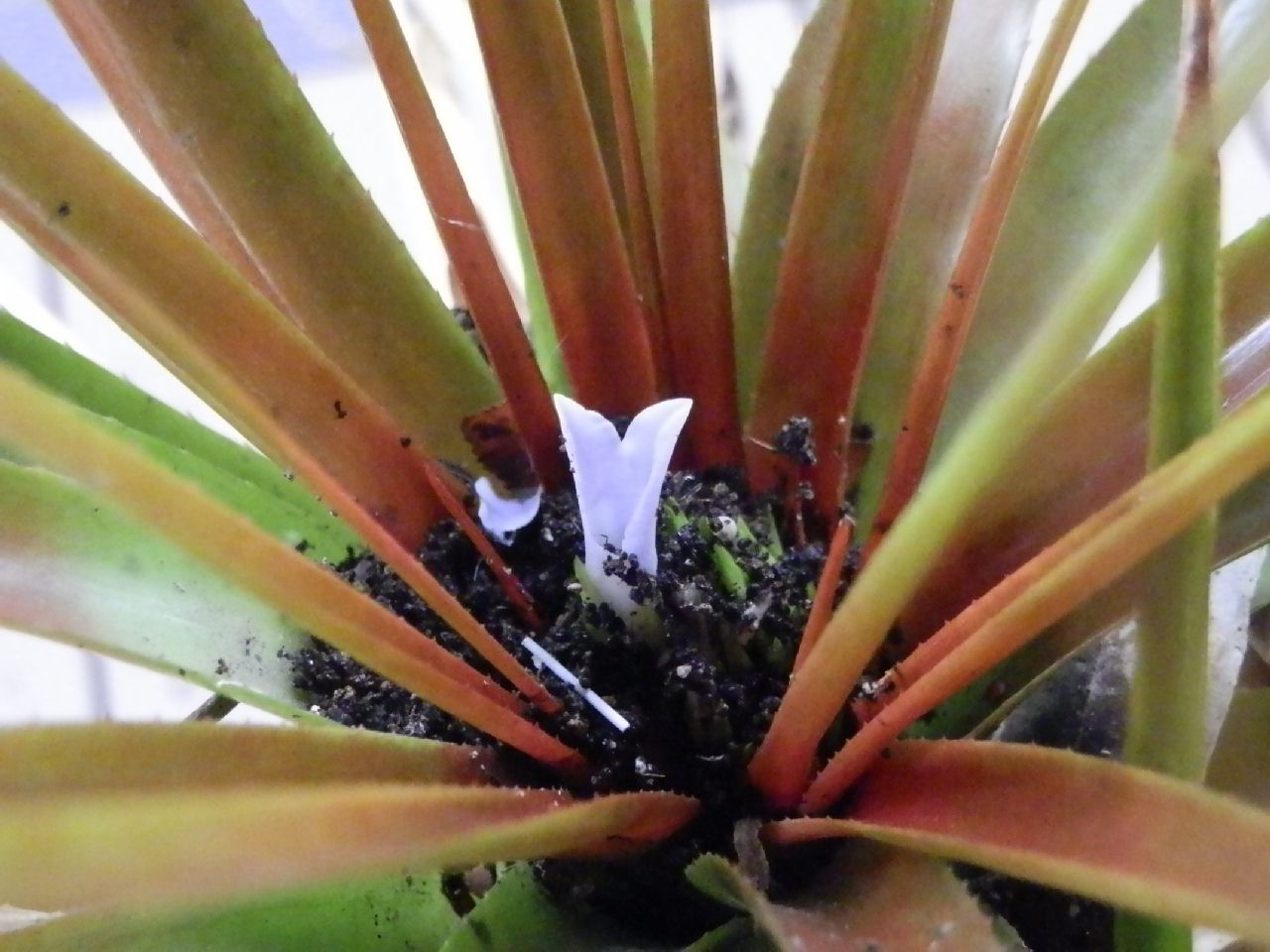
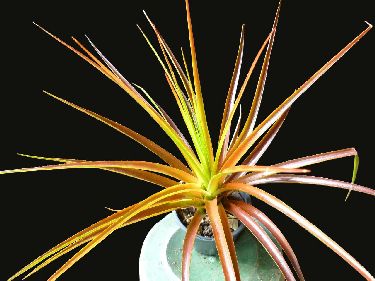
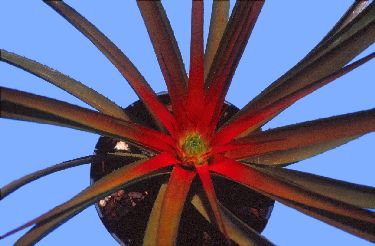
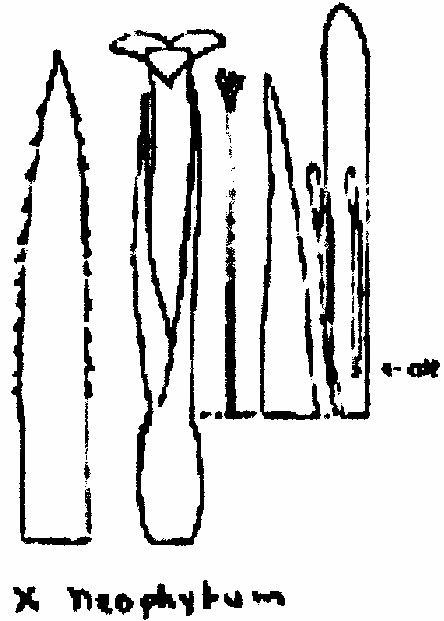
Detective series, DD0212, Ian Hook, Feb 2012.
Several years ago, Robyn Firth bought this plant from Dick Jamieson. He could have got it from any of the older Australian collections he sourced plants from.
It caught my eye, and I recently bought one from Robyn. It was labelled Orthophytum lymanianum.
It pays to never trust the label on a new plant and so I tried to find it on the internet.
Unfortunately there are almost no references to this plant in the vast World-wide-web ??? - Very strange.
I did find one (commercial) sellers’ photograph – it didn’t match AT ALL, and I found a botanical description, which didn’t match AT ALL.
O. lymanianum also seems to have only been described and cultivated quite recently, which didn’t quite match the age of this plant being in Australia.
But the plant DOES look somewhat like other xNeophytum that grow in Sydney. So just “on-spec” I wandered through the pictures on fcbs.
And stumbled upon....
xNeophytum Lymanii
It looked a very close match, and the similarity in name was too great to be co-incidence.
(Note: It is common practice for the BCR Registrar to attach a new cultivar name to a previously wrongly named but unique plant. Like a place-marker in a book, so it can be referenced again in future instead of forever being “lost”. In the registrar’s great wisdom, a name is often chosen that has some similarity to the previous wrong name.)
Derek has now provided me with the formal description of xNeophytum Lymanii (below) from M.B.Foster. It seems to agree with what we have and will be further checked when our plant next flowers.
It seems this plant may have still carried the correct, or best possible, label considering the difficulty of staying up-to-date we had in Australia until the recent advent of the www.
But I was still curious why the cultivar name was latinised? (and both capitalised AND in italics!)
Derek to the rescue again,
“xNeophytum lymanii is one of the few hybrids that qualifies under the ICBN because it is described in Latin and covers both nothogenus and nothospecies. For ease of reference we show it in the BCR as xNeophytum 'Lymanii'
We know that there are some Orthophytums that have an inflorescences down low in the centre of the plant but all are difficult to grow in Sydney. Who grows Orthophtyum navioides? This is why you see mainly xNeophytums in collections south of Brisbane because of hybrid vigour!"
xNEOPHYTUM Lymanii spec. hybr. nov. [Neoregelia bahiana (Ule) L. B. Smith var. viridis L. B. Smith X Orthophytum navioides (L. B. Smith) L. B. Smith]
Inflorescentia capitata pauciflora in foliorum rosulam immersa, bracteis florigeris angustis, serrulatis dentibus; flores hermaphroditi sessiles, sepalis liberis rectis symmetricis anguste triangularibus acuminatis, petalis liberis sine squamis nectariferis, staminum filamentis tenuissimis seriei 1 liberis seriei 2 ad basim petalorum adnatis, ovario glabro inferiore. Folia plurima subcrecta 3 dm. longa minutissime denseque serrulata vaginis parvis non insignitis.
TYPE: Cultivated at Orlando, Florida, M. B. Foster 3022 (U.S. Nat'l Herb.)
In this new bigeneric cross between species of Orthophytum and Neoregelia, the predominating features appear to come from the seed parent, Orthophytum navioides.
In fact, in many ways it has the appearance of being a giant form of that species when it reaches the flowering period. The narrow flat leaves of the seed parent are more numerous, more delicate and arching in a graceful manner and when in flower practically all of the leaves turn red while the Neophytum leaves are glossy, stiff, formal and nearly upright until shortly before the flowering period when they spread almost longitudinally.
Then the inner leaves surrounding the inflorescence turn a beautiful crimson red as many of the Neoregelia species do at this period.
The flower petals are white as they are in Orthophytum and not blue as they are in the pollen parent, Neoregelia bahiana var. viridis, which is a tubular plant of very few leaves quite in contrast to most of the Neoregelia species.
The leaves are thick and glossy and do not change color at the flowering period. The beautiful blue flowers, three inches in length, low in the tubular plant, are pleasantly discovered only when one peers down into the tube. The flower pedicels are nearly an inch long but the flowers of both the Neophytum and the Orthophytum are without pedicels. There are nectar scales on the petals of the Orthophytum but the petals of both the Neoregelia parent and the new xNeophytum Lymanii are without nectar scales.
